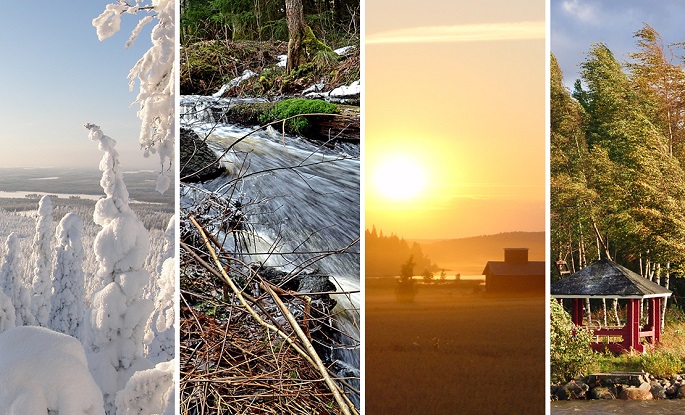Finland sees warmer 2023 than usual
Published : 08 Jan 2024, 12:53
The year 2023 was warmer than usual in Finland, according to the Finnish Meteorological Institute (FMI).
The average temperature for the whole country was 3.2 degrees Celsius, which is 0.3 degrees higher compared to the long-term average for 1991‒2020, said FMI in a press release on Monday.
The average temperature for the year varied between plus 7 degrees in the Southwest Archipelago and about minus 1 degree in northwestern Lapland.
The greatest deviation from the long-term average was found in the southern coast regions, where the weather was about half a degree warmer than the reference period average.
In the area extending from Ostrobothnia to the western part of North Ostrobothnia, the average temperature was close to the reference period average.
In particular, January, February, August and September were clearly warmer than usual, while March, July, October, November and December were colder than usual. September was record-warm in almost the whole country.
Last year's highest temperature was 33.6 degrees Celsius, which was measured in Pyynpää in Rauma on August 7.
The lowest temperature for the year, minus 37.5 degrees, was measured on March 24 at Kittilä Airport.
In a large part of the country, the annual precipitation was clearly higher than usual. Especially in Central Finland, the rainfall was unusually large in many places, in some places even exceptional.
The rainy months during the year included July and August. In the southern part of the country and in Lapland, annual precipitation levels were close to usual or higher than usual.
The location with the greatest amount of precipitation last year was at the Mujejärvi observation station in Nurmes, which got 1,066.5 millimetres.
Total precipitation was lowest in Kevo, Utsjoki, which got 423.3 millimetres. The greatest amount of precipitation observed in a single day was 103.3 mm measured in Pirttiperä in Multia on July 28.
The deepest recorded snow, 128 centimetres, was recorded in Ristijärvi in Mustavaara on March 29.
The average temperature in December 2023 varied between about minus 1 degrees Celsius in the south-western archipelago and minus 14 degrees in Northern Lapland.
The average temperature for December was about 2–4 degrees below the average for the 1991–2020 reference period.
The lowest temperature of the month, minus 33.1 degrees, was recorded in Kevojärvi in Utsjoki on December 7. The highest temperature of the month, plus 6.8 degrees, was recorded on December 19 on Bogskär in Kökar.
The precipitation in December was lower than usual in much of the country. The greatest precipitation of the month, 72.5 millimetres, was recorded in Virolahti in Koivuniemi. Kirakkajärvi in Inari had the lowest amount of precipitation, 13.4 millimetres. The greatest amount of precipitation in a single day was 21.5 millimetres, which was measured in Paljakka in Puolanka on December 19.
Almost the entire country was covered by snow throughout December, and the snow level was in many places unusually high. Snow-free areas were found mostly on the southwest coast for a few days during the Christmas week. At the end of the month, the southwestern archipelago and coast had a snow level of between 0 and 20 centimetres, while in the rest of the western part of the country it was mainly 20–40 centimetres. The eastern and northern parts of the country generally had 40‒60 centimetres of snow. The deepest snow in December was measured on December 26 in Kenttärova in Kittilä where the snow depth was 76 centimetres.
In December, 0–20 hours of sunshine were recorded, which is close to the typical number in December. The southern part of the country had slightly fewer sunny days than average.


